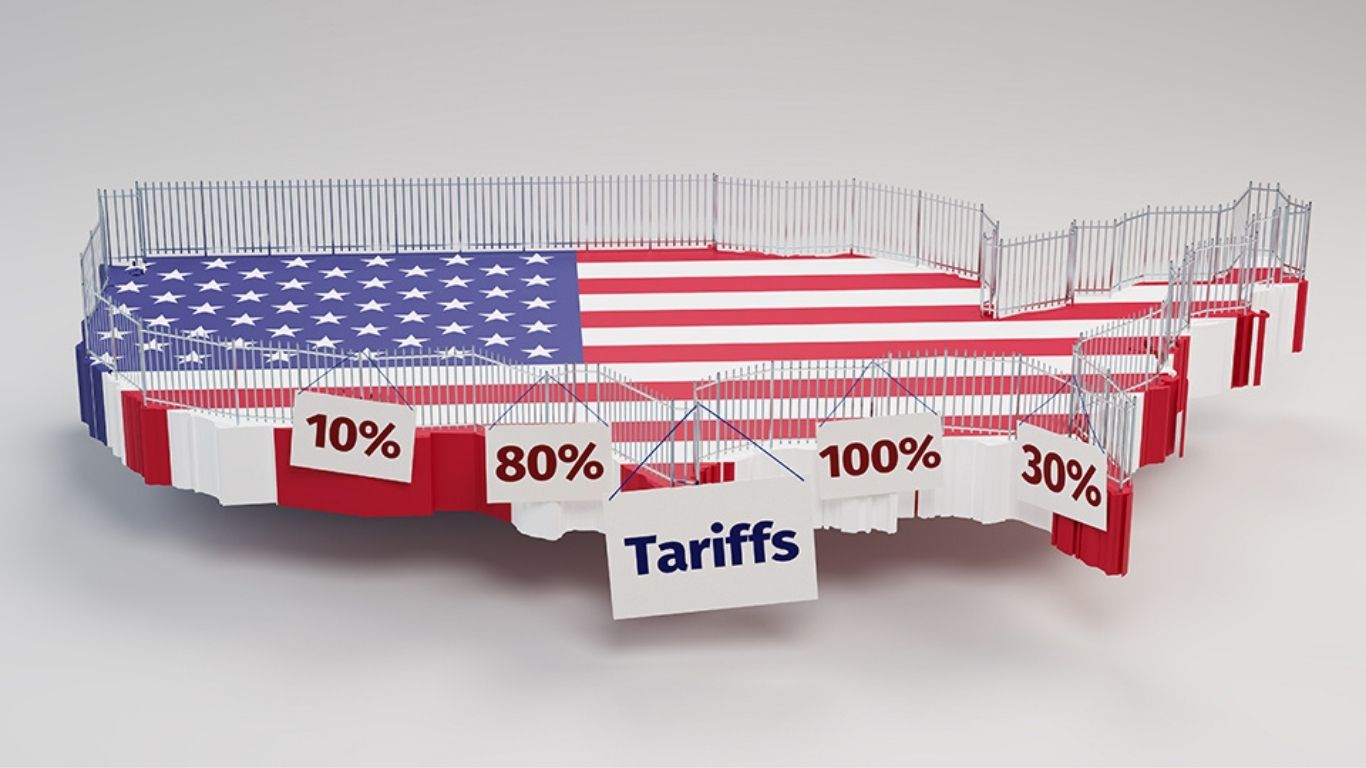Trump’s sweeping tariffs are triggering soaring prices, job losses, and international backlash. Discover how this trade war is reshaping the U.S. economy and threatening global alliances.
A Trade War That Hits Home First
President Donald Trump’s sweeping trade war has ushered in one of the most dramatic shifts in U.S. economic policy in decades, one that may come at an extraordinary cost to American households. With tariffs ranging from 10% to a shocking 50% now imposed on dozens of countries, consumers are seeing prices rise across the board, from groceries to electronics. What’s more alarming is that many of these tariffs apply equally to trusted allies and vital trading partners, adding fuel to a fire that’s already burning through American wallets.
According to Yale’s Budget Lab, these tariffs will lead to a 2.3% jump in prices nationwide costing the average household $3,800 per year. And the pain isn’t shared equally: lower-income families will be hit hardest, experiencing more than double the income loss of wealthier households. As inflation creeps up and consumer spending tightens, economists are now warning of slower growth and the rising threat of recession.
From Bananas to iPhones: Prices Are Spiking
Everyday items are now more expensive. With Latin American countries targeted by new tariffs, grocery staples like bananas, coffee, and chocolate are seeing price hikes. European wine imports could surge in cost by 40%, hurting both small businesses and consumers. Tech lovers aren’t spared either; iPhones may soon cost 40% more due to 46% tariffs on Vietnam and 34% on China. Japanese gaming consoles already show signs of price inflation, with $400 systems potentially hitting the $500 mark.
Even clothing is affected 97% of apparel sold in the U.S. is imported, much of it from countries now facing hefty new duties. As the American Apparel and Footwear Association warns, these costs will ripple through retail, landing squarely on consumers.
The Auto Industry Brakes Hard
One of the biggest casualties of this trade war is the U.S. automotive industry. Bank of America estimates that American-assembled vehicles will increase by over $3,200 each, with sales projected to fall by 2.5 million units. Goldman Sachs forecasts even higher jumps in foreign cars, which may see sticker prices climb by $5,000 to $15,000.
Curiously, the oil and gas sector is exempt from these tariffs a move many see as politically motivated, given the industry’s strong support for Trump’s campaign. This carve-out has only intensified criticism that the administration’s tariff strategy is inconsistent and self-serving.
Job Losses and Investment Chills
The fallout is already hitting American workers. Stellantis, the parent company of Jeep and Ram, has laid off 900 workers in response to production halts caused by tariffs on parts from Mexico and Canada. Other companies, facing unpredictable costs and global uncertainty, are pausing investments until they better understand where this volatile trade landscape is headed.
Without a clear strategy, businesses are left scrambling. Some are trying to relocate supply chains, but many simply can’t absorb the new costs or compete globally with cheaper alternatives.
Allies Strike Back—and Move On
The international backlash has been swift. Canada has pulled American goods off store shelves and launched an ad campaign in U.S. cities to remind shoppers that “tariffs are taxes.” The European Union is preparing retaliatory tariffs and threatening to restrict access for American banks and tech firms. China, meanwhile, has slapped a 34% tariff on all U.S. exports, a devastating blow to U.S. farmers, especially soybean and corn producers.
Foreign leaders, once open to negotiation, are now using Trump as a political scapegoat. From Canada to France to Mexico, leaders are finding support at home by opposing what they frame as economic bullying. As a result, few are likely to yield to U.S. demands, and many are forming trade pacts that exclude the United States altogether.
Flawed Logic Behind the Tariff Formula
The administration’s method for setting tariffs based on dividing a country’s trade deficit with the U.S. by that country’s exports has come under fire. It ignores America’s large surplus in services like finance and tourism, focusing only on goods. This approach unfairly penalizes exporters who may have little to do with trade imbalances. For example, a small Japanese auto parts supplier faces the same tariffs as a multinational conglomerate, despite their vastly different roles in global trade.
Fueling a Global Race to the Bottom
Rather than boosting U.S. manufacturing, Trump’s tariff plan may incentivize companies to move production to low-tariff countries many of which rank poorly in labor rights and worker protections. Shockingly, nearly half of the countries awarded the lowest tariffs under Trump’s formula have been flagged by the International Trade Union Confederation for systemic violations of labor rights.
Meanwhile, the plan fails to address a key issue: the globalized nature of supply chains. Even if final products come from countries with lower tariffs, many components may still originate from high-tariff nations like China, complicating compliance and increasing costs regardless.
America’s Influence Is Fading
America’s ability to lead on the world stage is eroding fast. Global issues like climate change, pandemics, and national security require cooperation, but Trump’s unilateral moves are pushing allies away. This week, Japan and South Korea struck a major trade agreement without the U.S., and Germany has called for a unified European response to Trump’s tariffs.
Unlike the Smoot-Hawley tariffs of 1930, which sparked a global protectionist wave, today’s retaliation is targeted squarely at one country: the United States. The result? American companies risk being frozen out of global markets and may find it harder to sell abroad while foreign firms step in to take their place.
An Expensive Gamble with Long-Term Consequences
Donald Trump’s trade war has quickly turned into an economic minefield, raising costs, shrinking opportunity, and alienating allies. What was pitched as a plan to “liberate” the American economy now looks more like a self-inflicted wound, with ripple effects that could last for years.
April 2, 2025, may have been branded “Liberation Day” by the Trump administration, but for millions of Americans watching their bills rise and jobs vanish, it’s more likely to be remembered as the day the U.S. economy was thrown into chaos.




